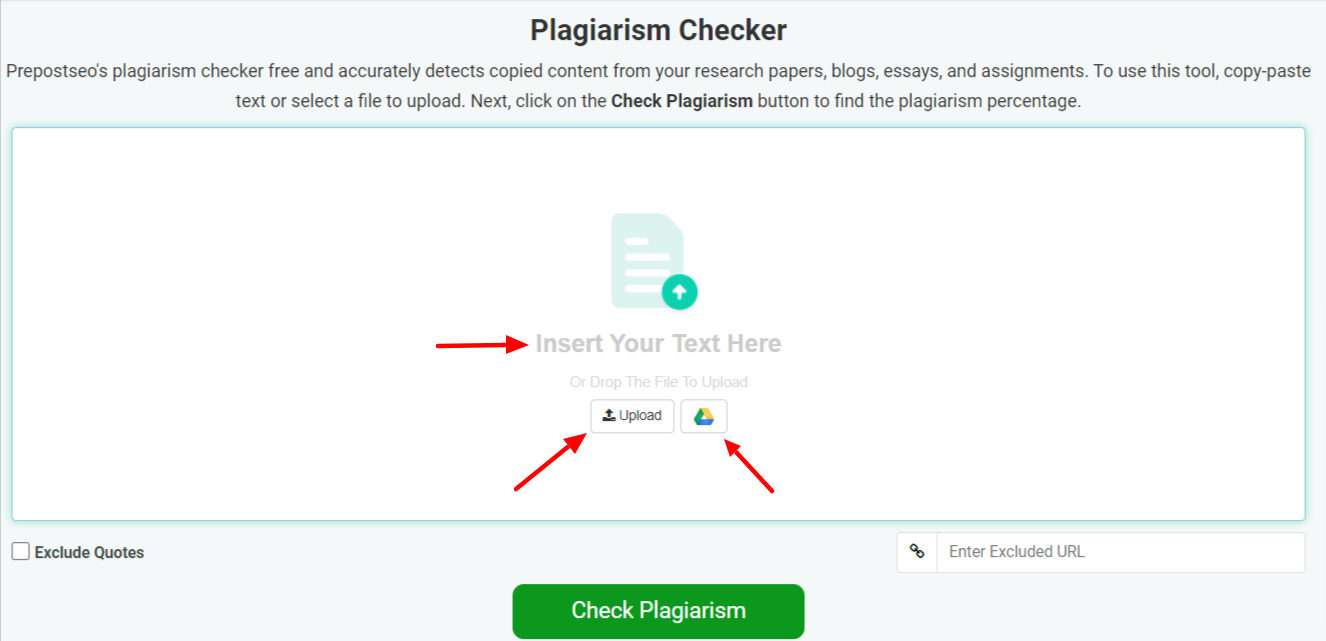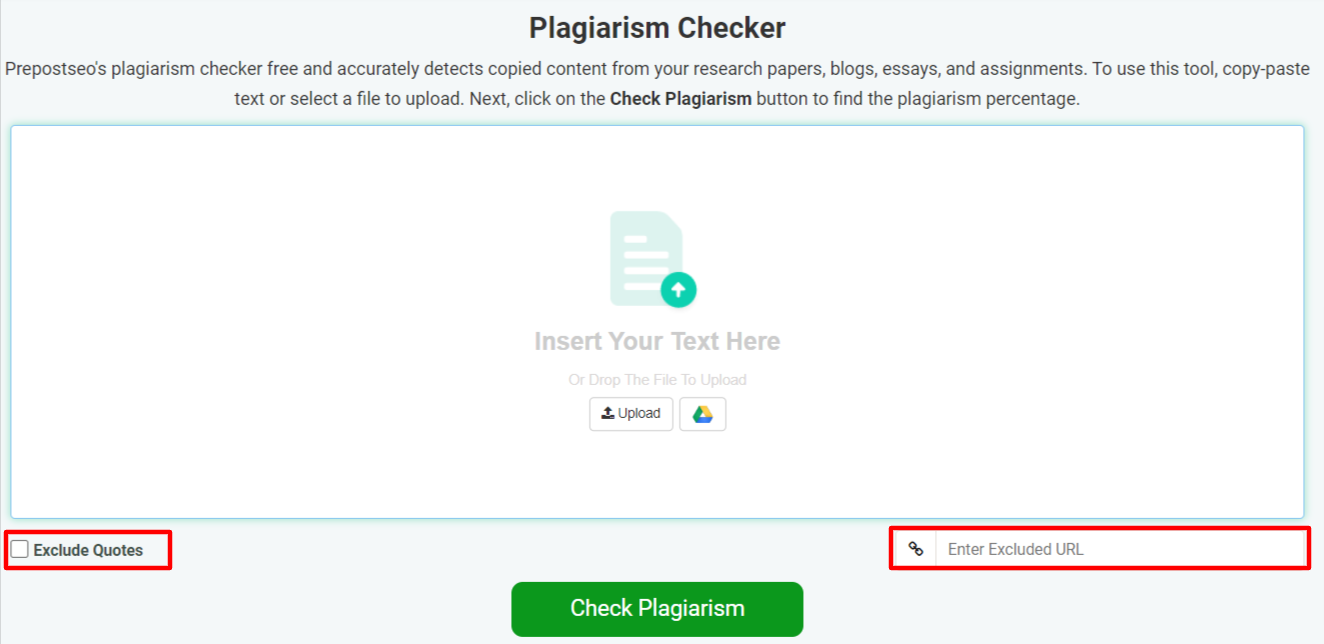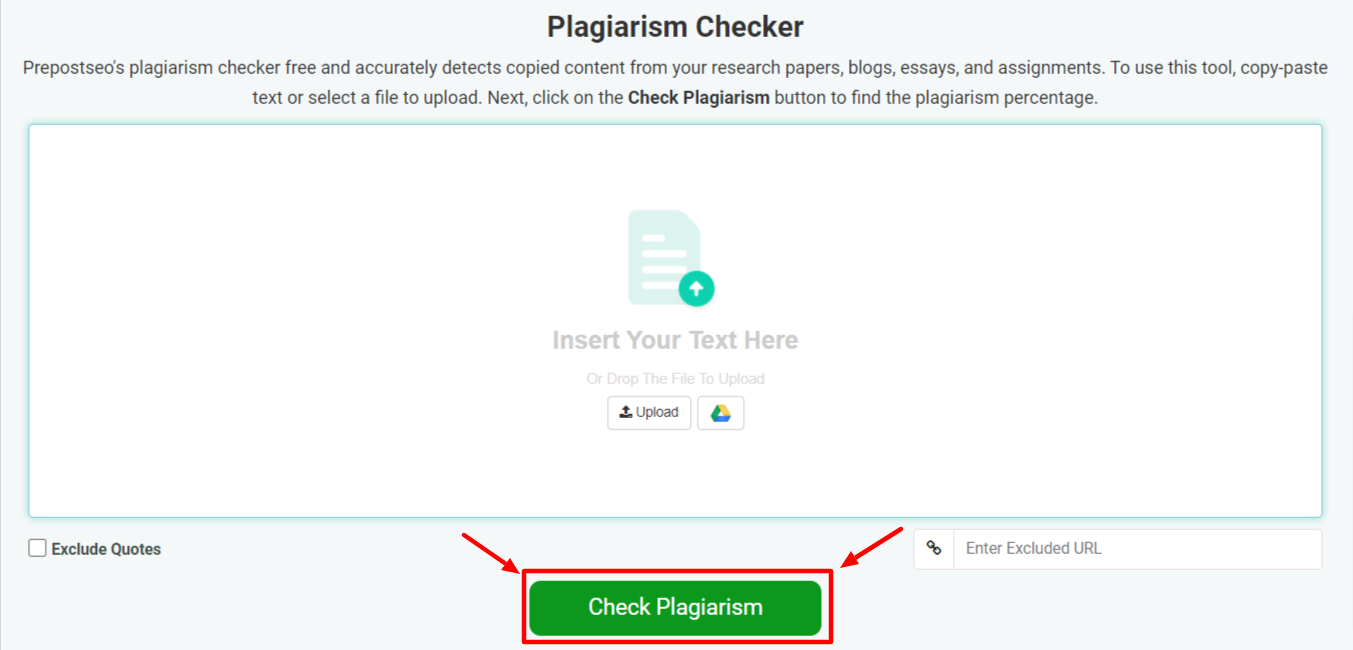What Plagiarism is and how to Check it For Free?
Plagiarism is a big problem that is faced by many people, including writers and students, nowadays. Due to the vast amount of material published on the internet, there is always a good chance that newly written content can pick up accidental plagiarism without the author realizing it.
To avoid this, plagiarism checkers are used. However, quality plagiarism checkers usually come with a hefty price tag, due to which they are not easily affordable for everyone.
Let's talk about a free yet reliable method that you can use to ensure that your content is unique.
What is Plagiarism?
But before we get to that part, let's first take a look-see at what plagiarism actually is.
Plagiarism can be simply defined as the act of taking someone else's content and using it as one's own without giving due credit to the original author.
Although this is a broad definition that roughly covers the main idea, there are a lot of different types in which plagiarism is classified. We will discuss those in the next part of this post.
By looking at the definition of plagiarism, it is clear that committing it is not ethical nor allowed in any capacity. While some institutions 'tolerate' a certain limit of it, it does not signify condonation.
Types of Plagiarism
Now, let's look at the various types of plagiarism that are commonly committed by writers.
1. Direct Plagiarism
Direct plagiarism is the most blatant type of plagiarism that can be committed by anyone. This type of plagiarism entails the complete, overt, and flagrant copying of the content and using the same without any sort of accreditation.
For example, if a particular person takes around 500 to 600 words in their exact shape and form and utilizes them as their own, it will be referred to as direct plagiarism.
Direct plagiarism is easy to spot. Since the copied content is in a whole big piece, it can be easily detected using an online tool.
2. Mosaic Plagiarism
As is evident from the name, mosaic plagiarism is the type of copying in which the plagiarized material is used intermittently and sporadically throughout a piece of content.
In other words, when someone commits this type of plagiarism, they use some of their own content and mix it up with some of the copied parts.
Compared to direct plagiarism, this type of copying can be a little hard to detect. Since the exact order and form of the plagiarized material gets broken and interrupted, it does not get entirely recognized as the same.
3. Source-Based Plagiarism
Source-based plagiarism is said to occur when a person attributes the wrong source or if the correct source is cited incorrectly.
For example, if a person takes content from a particular web page but cites another page on the same website, then this will be a type of source-based plagiarism. Similarly, if a person takes content from a research paper, but cites a book instead, then this will also be recognized as the same action.
What is the Need to Check Plagiarism?
Although we have mentioned above that plagiarism is not ethical, and it should be checked, etc., we haven't actually explained why. So, let’s do that now.
Essentially, checking for plagiarism is necessary because there are a lot of consequences and repercussions that you can face because of it. In an academic setting, the consequences of plagiarism can include getting a low grade on a particular subject, getting suspended, or even expelled.
On the other hand, if you use plagiarized content on your website or blog, you can face trouble from search engines. Your website can get a rank reduction, or it can get completely de-listed.
That is why it is necessary to check for plagiarism.
But wait, there's more!
In recent years, writing content with AI has become much more popular. People consider implementing words and phrases from generative AI applications into their content to improve diction or flow of discussion.
However, this causes another set of problems when some users implement everything from AI, making their work ineffective on search engines.
In addition to this, AI models also pick content from the internet, flagging the content for AI and plagiarism at the same time.
To combat this problem, it is recommended to use the AI detector alongside the plagiarism checker to ensure content originality and safeguard yourself against any copying accusations.
With that said, if you're still stuck with AI in the content, then the Humanize AI Text tool can help get rid of any signs of robotic content and make crafts fresh and interesting for the audiences again.
How Can You Check Plagiarism for Free?
Now that we're done understanding plagiarism, the next thing we have to do is talk about how you can check it for free.
When it comes to checking plagiarism, there’s practically only one way you can do it. And that is to use online plagiarism checkers.
We say 'practically' because the other method to do it would be to manually check every website, document, and file uploaded on the internet. And while that is "possible" to do (if you spend around a couple of hundred years on it), it's not practical.
Okay, so moving on, there are different types of plagiarism checkers available online that you can use. However, the good ones aren’t always free. You have to pay to use them, and that can be a bother.
But don’t worry. We’re going to tell you how you can check your content for plagiarism reliably without spending a penny.
Recommended Tool for Free Plagiarism Checking: Prepostseo
The plagiarism checker by Prepostseo is one of the most popular and reliable ones available online. And fortunately for free users, it can be used without any sort of payment or subscriptions.
While there are certain upgrades and enhancements that you can get by buying the premium plan, the actual tool and features can be used easily by everyone.
Let’s take a look at how you can check plagiarism using the tool by Prepostseo:
1. For the first step, you will have to load the plagiarism checker tool page and enter your content into the given text box. There are three different methods that you can use for importing your content, i.e.,
- Direct copy-pasting
- File uploads
- Google Drive import

2. After entering your content, you can use the ‘Exclude Quotes’ or ‘Exclude URLs’ option before starting the process. These two features can help you get more accurate results from the check.

3. Then, you just need to complete the reCAPTCHA and click on the ‘Check Plagiarism’ button to start the process.

And that’s it.
After the check is complete, you will be given the exact percentage of plagiarism and uniqueness, as well as the URLs for the matched sources.
How Can You Avoid Plagiarism in Your Writing?
Instead of writing your content, checking it for plagiarism, and then getting rid of it, it can be much better if you take care to avoid it in the first place.
So, before wrapping this post up, let’s look at some tips that you can follow to keep your writing free from plagiarism from the very start.
1. Don’t Do Your Research from a Single Source
One of the first things that you have to be careful about when writing content is not to do your research from a single source.
When you do your research from a single website, document, or book, you can start using their words, phrases, and sentences without realizing it. You can also start mimicking their style, which can further increase the chances of accidental plagiarism.
To avoid this, all you have to do is spread your research over a multitude of sources rather than just one.
2. Learn to Quote and Cite
Remember, it's not wrong to use someone else's content. It's wrong to use it without giving them credit. If you take care of the latter, you’re good to go.
There are different ways in which you can use someone else’s content without committing plagiarism. You can either cite them directly or put the content into quotes.
By "citing," we mean inserting a citation such as the ones that are used in academic papers and documents.
"Quoting," on the other hand, means to put the content between quotation marks (to see how that looks, check out the first word in this paragraph).
By employing any of these two techniques, you can avoid plagiarism.
3. Use Paraphrasing
Paraphrasing is also a good technique that you can use to avoid plagiarism. If you ever find that a certain sentence or passage in your content is showing up as plagiarized, you can paraphrase online to make it unique.
Conclusion
If you are thinking about stepping into the writing biz, you have to get yourself familiar with plagiarism. In this post, we looked at what plagiarism is and what types it is classified into.
Apart from learning about plagiarism, you also have to understand how you can check and avoid it. As far as checking plagiarism goes, you can simply use an online tool for it. And as far as avoiding it goes, you can use any of the three techniques that we’ve mentioned in the last part of this post.
